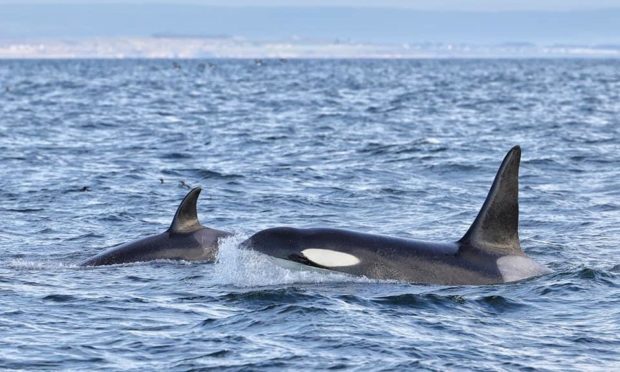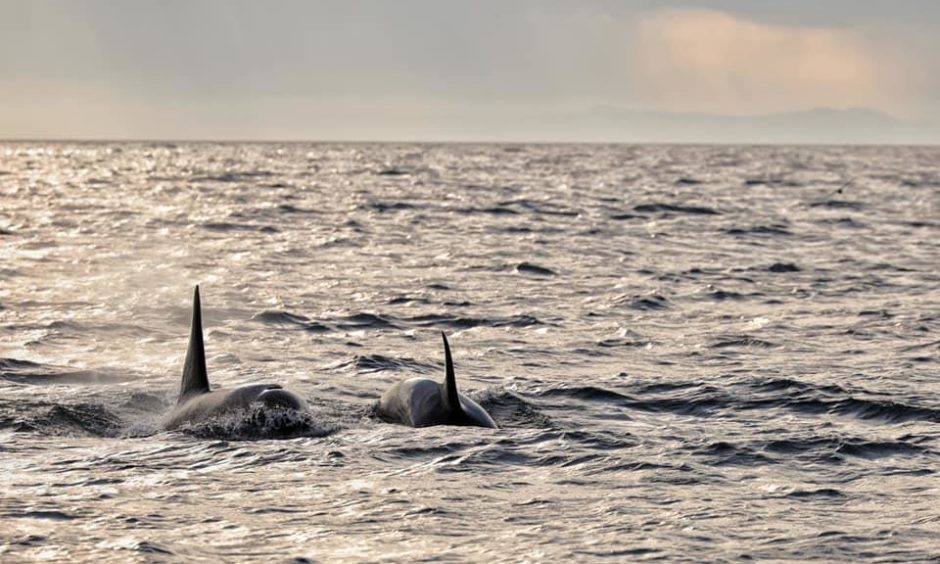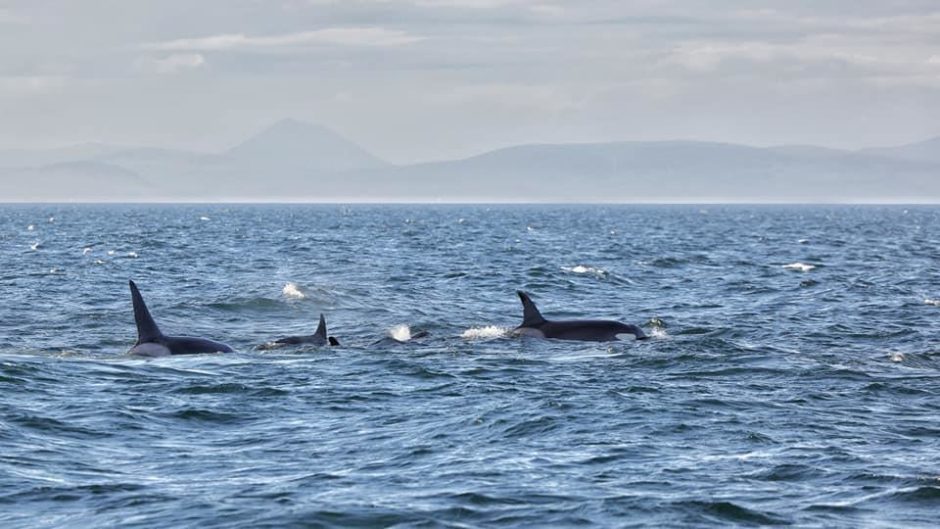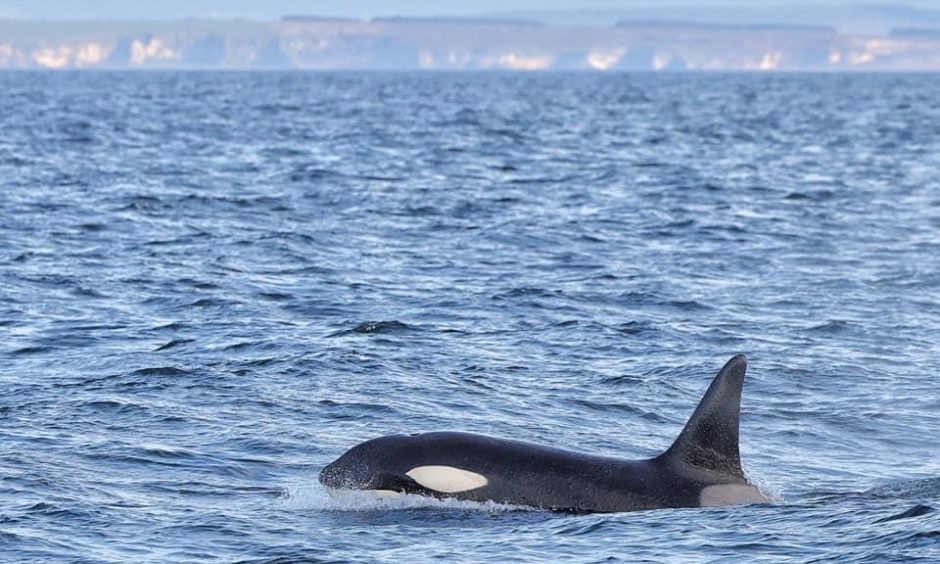Stunning images of orcas have been captured in the Moray Firth with enthusiasts believing the whales are happy to call the water their summer home.
The pod of striking mammals, led by the matriarch Mousa, have been spotted in the area repeatedly during the last three weeks.
At one point the group of five headed north and were seen heading towards Scapa Flow in Orkney.
However, the killer whales have since returned to the Moray Firth and were spotted off the coast of Burghead, Hopeman and Lossiemouth at the weekend.
Orcas put on spectacular show in Moray Firth
Whale watcher Steve Truluck has photographed, catalogued and marvelled at all sea life in the Moray Firth since moving to Hopeman nearly 10 years ago.
However, orcas have held a special place in his heart and he regularly takes part in whale watching events from Burghead and Caithness.
Excited messages sent on Sunday morning alerted Mr Truluck to the presence of the pod about nine miles off the coast of Burghead, which he spotted through his telescope.
He said: “There were three groups a long way out but it was incredible what we were seeing.
“They were doing this thing called sky hopping, which is when they stick they whole head and front fins out of the water.
“And they were doing handstands as well, when they put their whole tail out of the water for about 10 seconds.”
After briefly returning home, Mr Truluck was soon looking for orcas again after hearing from a friend they had travelled closer to the coast.
He said: “A fisherman rang me to say he had seen them about five miles off the coast of Hopeman.
“We headed out in a boat to their last known position and spent about two hours looking for them, I was worried it was going to be a damp squib.
“We went a bit further out and headed east towards Lossiemouth and fortunately managed to catch a glimpse of them, I honestly don’t know how though.
“Amazingly they came towards us and we spent about 20 minutes driving along to the east with them swimming alongside us – it was incredible, really special, really amazing.”
When can orcas be seen in Scotland?
Mr Truluck, who is a skipper for Hebridean Whale Cruises, has is one of the contributors to a book identifying killer whales who visit Scottish waters.
Orcas travel south from Iceland every year, usually between May and July when seal pups are born.
Mousa, who led the pod spotted near Hopeman at the weekend, was named after Mousa Sound in Shetland – where she was first seen in 2008.
Scars, fin shapes, injuries and other distinguishing features are used to tell the huge mammals apart.
Mr Truluck added: “It’s very interesting there has been lots of sightings of them since April 25, they’re obviously very happy here if they’ve been here for the last three weeks.
“It’s really important lots of people don’t rush out in boats to see them though because it can scare them.
“At one point they were seen in the Pentland Firth but they’ve gone to Orkney and then headed back again, probably because there’s more food for them.
“It’s a really good sign. It’s a sign the seas are healthy when the apex predators are here.”



